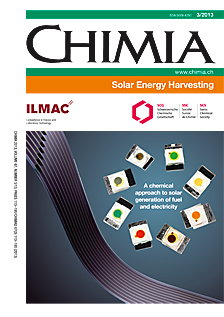Solar-to-Chemical Energy Conversion with Photoelectrochemical Tandem Cells
DOI:
https://doi.org/10.2533/chimia.2013.155Keywords:
Hydrogen, Oxide semiconductors, Photoelectrochemical water splitting, Solar fuelsAbstract
Efficiently and inexpensively converting solar energy into chemical fuels is an important goal towards a sustainable energy economy. An integrated tandem cell approach could reasonably convert over 20% of the sun's energy directly into chemical fuels like H2 via water splitting. Many different systems have been investigated using various combinations of photovoltaic cells and photoelectrodes, but in order to be economically competitive with the production of H2 from fossil fuels, a practical water splitting tandem cell must optimize cost, longevity and performance. In this short review, the practical aspects of solar fuel production are considered from the perspective of a semiconductor-based tandem cell and the latest advances with a very promising technology – metal oxide photoelectrochemical tandem cells – are presented.Downloads
Published
2013-03-27
How to Cite
[1]
K. Sivula, Chimia 2013, 67, 155, DOI: 10.2533/chimia.2013.155.
Issue
Section
Scientific Articles
License
Copyright (c) 2013 Swiss Chemical Society

This work is licensed under a Creative Commons Attribution-NonCommercial 4.0 International License.







